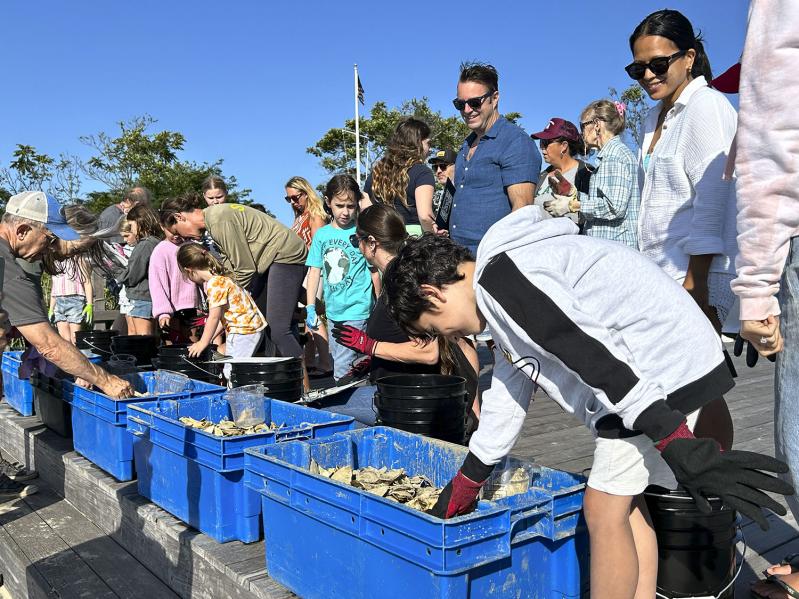“We have to be proactive, we have to remain proactive,” said Sag Harbor Village Mayor Thomas Gardella at an Aug. 21 event on the beach near John Steinbeck Waterfront Park, hosted by the nonprofit Back to the Bays. The group is spearheading a project to build an oyster reef, which is bringing together local government and private citizens, as well as children — many of whom were there that day to learn about marine science, and, in particular, the ecological benefits of oysters.
Kate Rossi-Snook, Back to the Bays aquaculture coordinator, began with a short educational presentation. The group has been a part of Cornell Cooperative Extension’s marine stewardship program since last year, also working on restoring eelgrass to the area. Last fall it led an eelgrass workshop at Havens Beach featuring community organizers like Shawn Sachs of Sag Harbor and the local brewery Kidd Squid, who are also working on installation of the oyster reef.
While not quite as pleasing to the eye, oyster reefs serve a similar ecological function to coral reefs. “It’s a really important habitat for all sorts of juvenile fish and crabs that people love to fish for, that people love to eat, and that are just generally important to our ecosystem,” Ms. Rossi-Snook explained. “Oysters are considered a keystone species — they’re super important, because not only do they offer that critical habitat, they also clean the water.”
Addressing the kids in her audience, Ms. Rossi-Snook asked a tough question: “How many gallons of water can one oyster filter per day?” After several shouted answers, the correct one was revealed: Fifty. Fifty gallons per oyster per day — therefore, four oysters, each no bigger than a cantaloupe, can filter 200 gallons of water per day among them. So far through this initiative, some 50,000 oysters have been deployed in the ocean, and many of them — not all — will grow into adulthood.
After the presentation, participants were split into groups and brought before six large totes full of what looked like broken shells. “But it’s much more than that,” Ms. Rossi-Snook explained, “it’s actually shell that we recycled, from participating restaurants, baymen, or recreational shellfishers. We then, in our hatchery, set baby oysters onto them.”
Her audience’s job was to catalog as many of the baby oysters on the shells as they could, creating a dataset that she can use the next time she checks the progress on the reef.
Kimberly Barbour, director of Back to the Bays, also spoke, driving home the importance of strong community participation. “A big part of Back to the Bays is fostering stewardship and creating opportunities for folks like yourselves to actually get involved in our work and feel that good feeling of giving back to our bays,” she said.
She could have been talking about Jeanne Stedman, who traveled from Montauk that day to volunteer with Back to the Bays. After wading into the water to help Ms. Rossi-Snook lay the oysters, Ms. Stedman said happily that “I just love to give back.”




